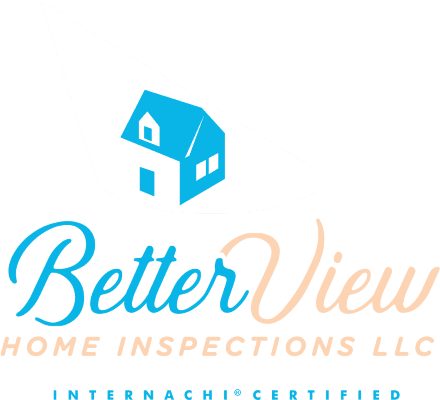Are you preparing to sell your home? Before you list, there’s a crucial step that could save you time, money, and headaches: a seller inspection. While many homeowners are familiar with buyer inspections, seller inspections are becoming increasingly popular, and for good reason.
Imagine this scenario: You’ve just accepted an offer on your home, only to have the deal fall through when the buyer’s inspection reveals unexpected issues. Now you’re back to square one, with repairs to make and potential buyers wary of what else might be lurking. A seller inspection can help you avoid this nightmare, putting you in control of your home sale from the start.
In this comprehensive guide, we’ll explore everything you need to know about seller inspections. From understanding what they entail to leveraging the results in your sale process, we’ll cover the ins and outs of this powerful tool. So, whether you’re a first-time seller or a seasoned pro, buckle up as we dive into the world of seller inspections and how they can revolutionize your home-selling experience.
Understanding Seller Inspections
A. Definition and purpose
A seller inspection, also known as a pre-listing inspection, is a comprehensive evaluation of a property’s condition conducted by a professional home inspector before the home is listed for sale. The primary purpose is to identify potential issues or defects that may affect the property’s value or saleability.
B. Benefits for sellers
Seller inspections offer numerous advantages:
Proactive problem-solving
Accurate pricing
Increased buyer confidence
Smoother negotiations
Faster closing process
C. Differences from buyer inspections
While both seller and buyer inspections aim to assess a property’s condition, they differ in several key aspects:
Timing: Seller inspections occur before listing, while buyer inspections happen after an offer is made
Purpose: Seller inspections prepare the property for sale, buyer inspections verify the property’s condition
Control: Sellers have more control over addressing issues found in their inspection
Disclosure: Results of seller inspections may need to be disclosed to potential buyers
By understanding these differences, sellers can better appreciate the unique advantages of conducting their own inspection before putting their property on the market.
Preparing for a Seller Inspection
Choosing a qualified inspector
When preparing for a seller inspection, selecting the right inspector is crucial. Look for professionals with relevant certifications, extensive experience, and positive reviews. Consider asking for recommendations from real estate agents or checking with the International Association of Certified Home Inspectors (InterNACHI).
Timing the inspection
Timing is essential for a successful seller inspection. Ideally, schedule the inspection well before listing your property. This allows ample time to address any issues discovered and make necessary repairs. A good rule of thumb is to conduct the inspection 2 months prior to listing.
Areas typically covered
A comprehensive seller inspection usually includes:
Structural components
Electrical systems
Plumbing
HVAC systems
Roofing
Foundation
Insulation and ventilation
Exterior and interior conditions
Cost considerations
The cost of a seller inspection can vary based on factors such as:
Property size
Location
Age of the home
Inspection scope
On average, expect to pay between $400 and $600 for a standard inspection. While this may seem like an additional expense, it can save you money in the long run by identifying issues early and potentially increasing your home’s value.
Now that you understand how to prepare for a seller inspection, let’s explore the common issues that these inspections often reveal.
Common Issues Revealed in Seller Inspections
Structural issues
Structural issues are often the most significant concerns revealed during seller inspections. These problems can range from minor cracks to major foundation issues. Common structural problems include:
Foundation cracks or settling
Sagging or uneven floors
Wall cracks or bowing
Roof framing issues
Electrical and plumbing concerns
Electrical and plumbing systems are critical components of any home. Inspections frequently uncover issues such as:
Outdated wiring
Overloaded circuits
Faulty GFCI outlets
Leaking pipes or fixtures
Poor water pressure
Outdated or corroded plumbing materials
Roof and exterior defects
The roof and exterior of a home are its first line of defense against the elements. Common issues include:
Missing or damaged shingles
Improper flashing around chimneys or vents
Gutter damage or improper drainage
Siding damage or rot
Window and door seal failures
HVAC system issues
Heating, ventilation, and air conditioning (HVAC) systems are essential for comfort and energy efficiency. Inspections may reveal:
Inefficient or outdated equipment
Improper installation or maintenance
Ductwork leaks or damage
Thermostat malfunctions
Pest infestations
Drywood termites
Subterranean termites
Rodents
By identifying these common issues, sellers can address problems proactively, potentially increasing their home’s value and appeal to buyers.
Conclusion
A pre-listing home inspection is more than just a tool to uncover hidden issues, it’s a strategic move that can streamline the selling process, build buyer confidence, and potentially maximize your home’s value. By addressing problems before listing, you reduce surprises during negotiations and show prospective buyers that you’re transparent and proactive. If you’re considering putting your home on the market, scheduling a home inspection before selling, will give home inspection tips for sellers and provide the edge you need for a smoother, faster sale.

